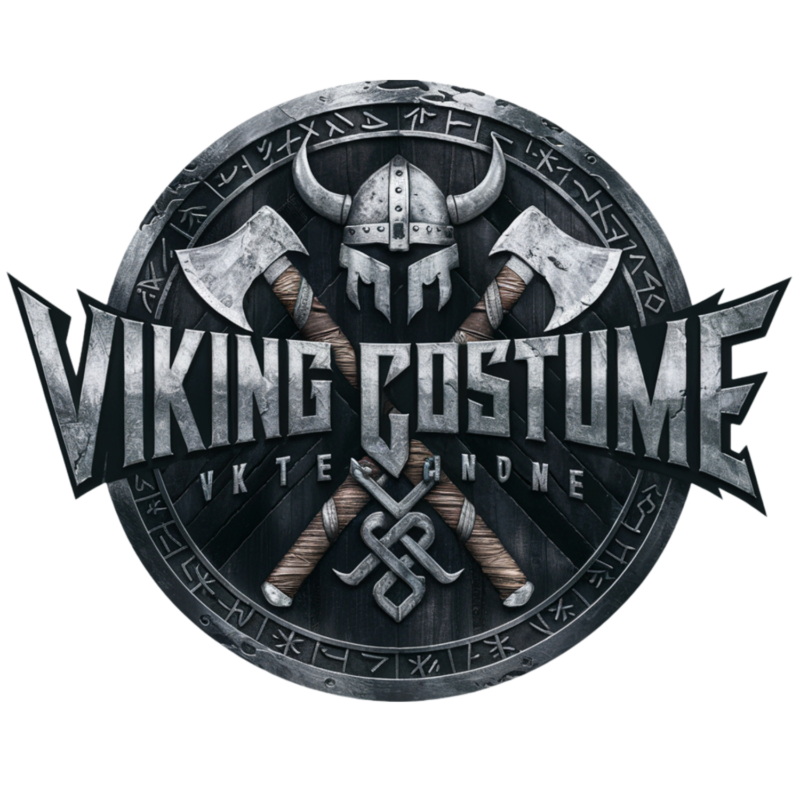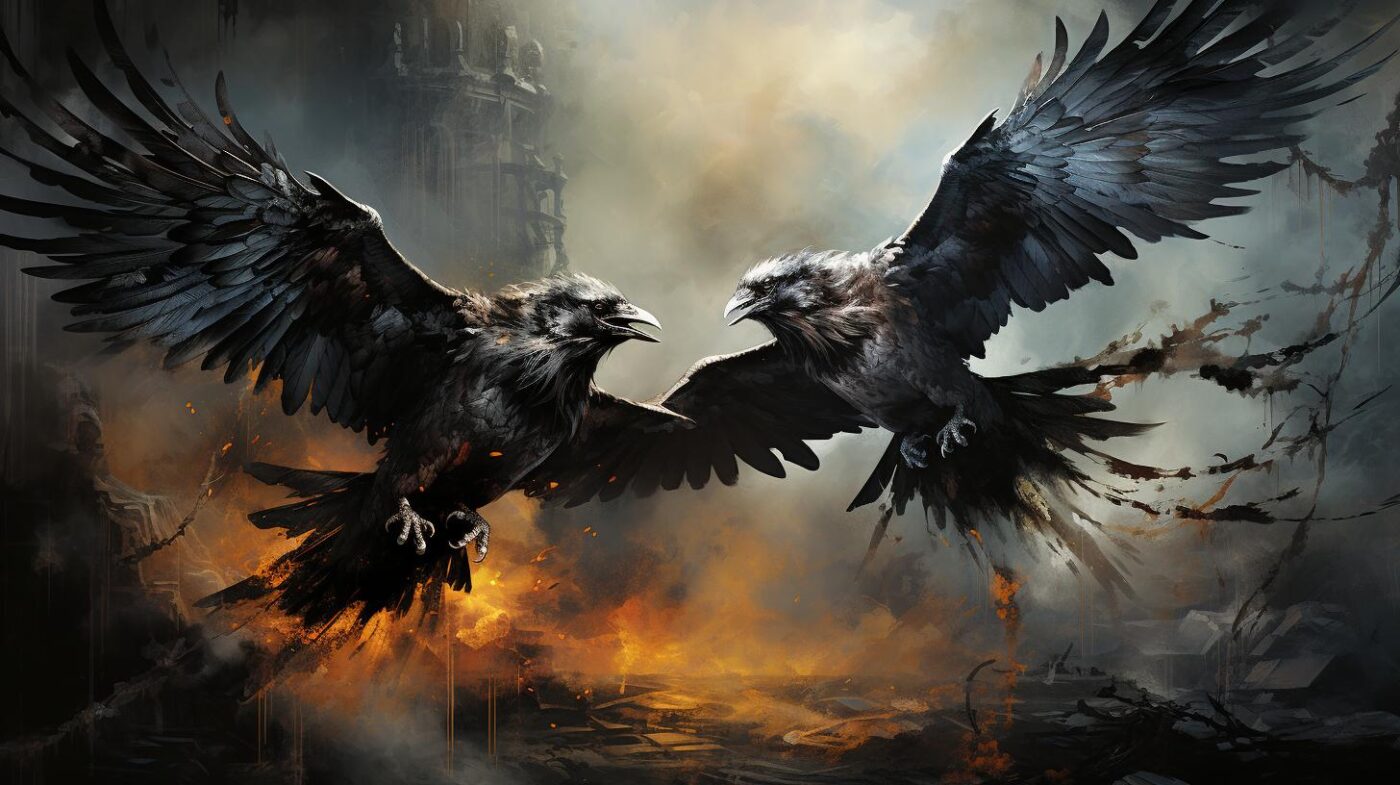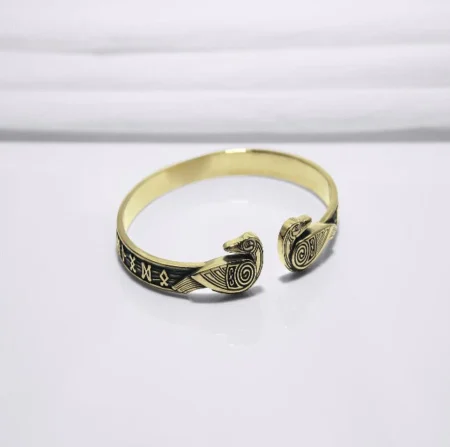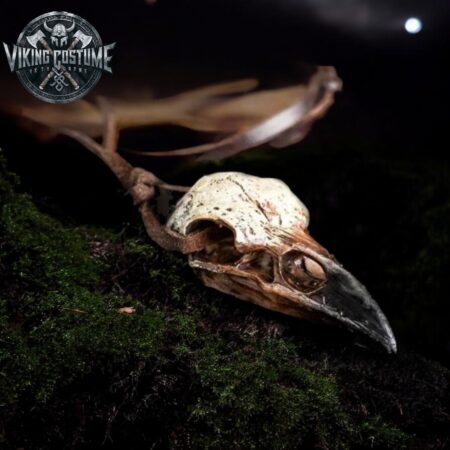Blog, Viking History & Mythology
Unraveling the Role of Ravens in Norse Mythology and Culture: Hugin and Munin
Ravens hold a special place in Norse mythology, standing as symbols of wisdom, memory, and divine connection. These enigmatic birds often appear in tales surrounding Odin, the Allfather, reflecting his quest for knowledge and control over the cosmos. But why do ravens captivate the human imagination, particularly within the context of Norse culture? Their mystique stems from their dual role as messengers and symbols of transformation.
In “raven Norse mythology,” these birds are more than mere companions; they serve as intermediaries between realms, bridging the mortal and divine. They embody dualities—life and death, wisdom and destruction—making them deeply symbolic in Viking beliefs. Their black feathers and sharp cries added a layer of mystery and awe, ensuring their place as guardians of wisdom and harbingers of fate.
Hugin and Munin: Odin’s Eyes and Ears Across the Realms
At the center of raven mythology are Hugin (Thought) and Munin (Memory), Odin’s trusted companions. Each day, these two ravens fly across the nine realms, gathering knowledge and insights. By nightfall, they return to sit on Odin’s shoulders, whispering everything they’ve observed into his ears. This daily ritual makes them essential extensions of the Allfather’s omniscience.

Hugin and Munin symbolize the balance between intellect and recollection, reflecting the traits Odin valued most. In “norse raven” tales, these birds are portrayed as vital tools in his pursuit of wisdom. Their names remind us of the importance of thoughtfulness and reflection—qualities that transcend their mythological origins and resonate even today.
Interestingly, Viking warriors often invoked the power of Hugin and Munin for guidance in battle. By calling on Odin’s ravens, they sought clarity and strength to navigate the uncertainties of war. This connection highlights the deep cultural significance of these birds, as they embodied the Viking spirit of courage and introspection.
The Symbolism of Ravens in Norse Mythology: Wisdom, Death, and Power
Ravens are rich in symbolism, representing wisdom, power, and the delicate balance between life and death. In “raven Norse mythology,” their association with Odin underscores their role as keepers of knowledge and guides in the cycle of existence. These birds are often depicted on battlefields, circling over the fallen—a reminder of the inevitability of death and the honor of sacrifice.
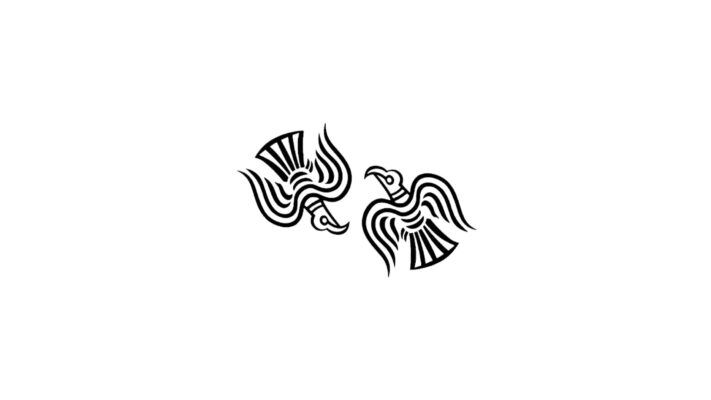
Their connection to death wasn’t feared but revered. Vikings believed that ravens guided souls to Valhalla, Odin’s grand hall for fallen warriors. This made them symbols of transformation and the eternal journey of life after death. The raven’s sharp gaze and flight patterns reinforced its image as a creature capable of traversing both the physical and spiritual worlds.
Beyond the battlefield, ravens symbolized strategy and foresight. Their keen observation mirrored the traits valued by Viking leaders, who relied on intelligence and preparation. As symbols of wisdom, ravens remain timeless figures in mythology, their meanings continuing to inspire those who seek knowledge and guidance.
The Ravens’ Connection to Viking Culture: Everyday Life and Beliefs
Ravens held a revered position in Viking culture, extending far beyond their mythical roles as Odin’s companions. Their presence in everyday life and beliefs reflected the Vikings’ deep connection with nature and the spiritual world. Observing ravens often guided Viking explorers and seafarers. As these birds could spot land from great distances, their flight patterns were invaluable during long and treacherous sea voyages. This practical reliance further strengthened their symbolic role as protectors and navigators.
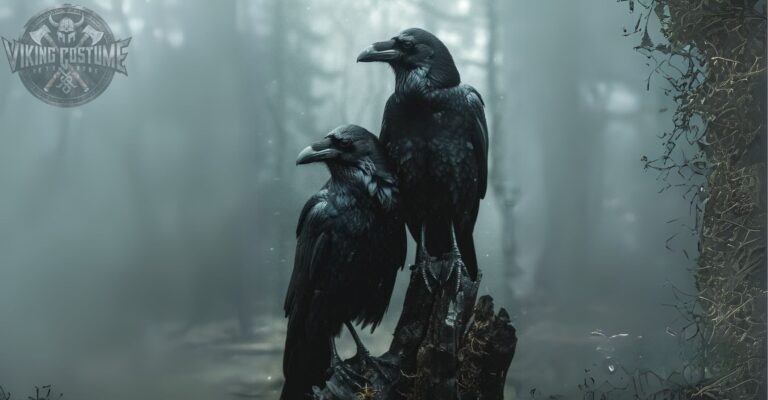
In Viking battles, ravens were more than just decorative motifs—they embodied strength and divine favor. Shields, banners, and armor often bore raven imagery, serving as talismans for warriors who sought Odin’s blessings. Ravens were believed to carry the prayers and hopes of the Vikings to the gods, reinforcing their role as spiritual messengers. This connection made them indispensable symbols of courage and resilience.
Beyond warfare, ravens also featured prominently in rituals and ceremonies. They were often associated with transitions, such as births, deaths, and changes in seasons, marking them as creatures of profound spiritual importance. Their enigmatic nature served as a bridge between the living and the divine, making “norse raven” a symbol that connected Vikings to both their physical and metaphysical worlds.
Why Ravens? Odin’s Unique Choice in Norse Mythology
Odin’s selection of ravens as his trusted companions speaks volumes about their significance in Norse mythology. These birds are renowned for their intelligence, adaptability, and keen observation—traits that mirror Odin’s relentless pursuit of knowledge and wisdom. Unlike other animals, ravens symbolized a delicate balance of life and death, perfectly aligning with Odin’s multifaceted nature.
Ravens were omnipresent on battlefields, scavenging among the fallen, which tied them to the themes of fate and sacrifice. For Odin, who presided over the warriors in Valhalla, their presence was both literal and symbolic. They represented his connection to death’s inevitability and the honor found in sacrifice. Their sharp cries and piercing gaze made them ideal messengers, delivering the secrets of the realms to the Allfather.
In “raven Norse mythology,” their ability to traverse vast distances further reinforced their role as the perfect emissaries. Odin’s choice highlights their symbolic and practical value, elevating them from common creatures to figures of mythic importance. This decision underscores the intertwined nature of Norse mythology, where every symbol, being, and story contributes to a grand cosmic narrative.
Norse Ravens in Modern Interpretations: Art, Fashion, and Literature
The legacy of ravens transcends mythology, finding its way into modern interpretations through art, fashion, and literature. In today’s world, “norse raven” imagery is a source of inspiration, representing wisdom, resilience, and mystery. These timeless qualities make ravens a favorite motif in tattoos, illustrations, and other forms of creative expression.
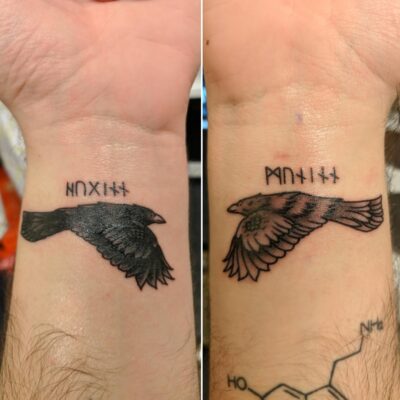
In fashion, raven-inspired designs dominate Viking-themed jewelry and apparel. From intricate necklaces featuring Hugin and Munin to clothing emblazoned with raven wings, these symbols offer a unique blend of historical reverence and contemporary style. People are drawn to their dual meanings—intellect and intuition—which resonate deeply with modern audiences seeking personal empowerment.
Literature and media also celebrate the allure of ravens. They appear as enigmatic guides or omens, weaving ancient Norse mythology into modern narratives. These stories remind us of the enduring relevance of Viking culture, where ravens symbolize a bridge between worlds, connecting us to the wisdom of the past while inspiring the creativity of the present.
Embracing the Wisdom of Norse Ravens
The ravens of Norse mythology are more than mere birds; they are enduring symbols of wisdom, courage, and the intricate interplay between life and death. Hugin and Munin, Odin’s loyal companions, remind us of the importance of thoughtfulness and reflection in navigating the challenges of life. Their stories teach us to seek knowledge, embrace transformation, and honor the mysteries of existence.
By exploring “raven Norse mythology,” we gain insight into a culture that revered nature, valued bravery, and sought harmony between the physical and spiritual realms. Whether through their roles in myth, their practical significance in Viking life, or their influence on modern art and fashion, ravens continue to captivate the imagination.
As we embrace the wisdom of the Norse raven, we are reminded of the power of observation, the beauty of transformation, and the eternal connection between the past and the present. These lessons inspire us to face life’s uncertainties with courage, curiosity, and an open heart.
